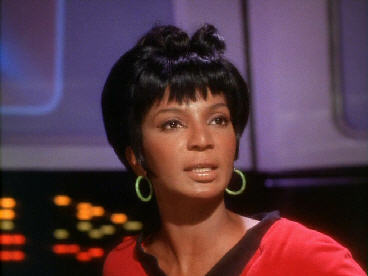|
Star Trek ClassicThe Original Series aired from 1966 - 1969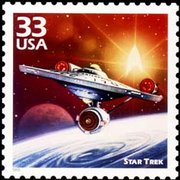
Star Trek Classic or TOS is a culturally significant science fiction television series created by Gene Roddenberry in the 1960s. It spawned a strong fandom (TV Guide rated it #1 in its list of the "25 Top Cult Shows Ever"), and was followed by five additional television series and ten theatrical movies (the Guinness Book of Records lists it as having the largest number of spinoffs). To distinguish the Star Trek classic series from the sequels which followed, it has become known as Star Trek: The Original Series, abbreviated as ST:TOS or TOS. Set in a utopian vision of the 23rd century, Star Trek follows the adventures of the Starship Enterprise and her crew. A voiceover at the beginning of each episode states their goal (ungrammatically according to some, since "to boldly go" is a split infinitive): Space, the final frontier. These are the voyages of the Starship Enterprise. Its five-year mission: to explore strange new worlds, to seek out new life and new civilizations, to boldly go where no man has gone before. Star Trek debuted on NBC on Wednesday, September 8, 1966. Initially, it was not successful; ratings were low and advertising revenue was lackluster. However, when threats of cancellation loomed in the show's second season, the show's devoted fanbase conducted an unprecedented campaign, petitioning NBC to keep the show on the air. They succeeded in gaining a third season, but the show was moved to a Friday night "death slot," and was cancelled at the end of its third season. The last episode aired on June 3, 1969. But then the fans got a very lucky break. The show was sold into syndication, and stations were able to air it when they thought fans and potential fans would be able to watch it. Many fans soon joined those who held the campaign which made the series popular, and they created a broad market for the franchise. The first six Star Trek movies were based on the original series (and the seventh included characters from it). Fans of the original Star Trek series became known as Trekkies. To true aficionados of Trek fandom Trekker would be more correct.
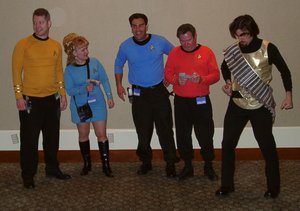
Trekkie (or Trekker) is a term used to describe a fan of the Star Trek science fiction franchise. Thirty some odd years ago, science-fiction editor Art Saha coined the term "trekkies" when he saw a few fans of Star Trek's first season wearing pointy ears at a science fiction convention. He used the term in an interview with Pete Hamill that Hamill was conducting for TV Guide concerning the phenomenon of science fiction. Today, the word is found in the Oxford dictionary, and aficionados of the long-run series have seen their subculture achieve stratospheric status. We were originally Trekkies, but in the 70s & 80s, that was considered to be crazy, so we became Trekkers. I think in the 21st Century we're Trekkies again.
The Creation of Star TrekIn 1964, Roddenberry's concept for "Star Trek" secured him a three-year development deal with leading independent TV production company Desilu (founded by comedy stars Lucille Ball and Desi Arnaz). Roddenberry pitched the series to the major TV networks as a sort of "Wagon Train to the Stars", depicting it as a futuristic version of the westerns (such as Wagon Train and Gunsmoke) which were popular on television at the time. In Roddenberry's original pitch, the protagonist was Capt. Robert April of the "S.S. Yorktown". Eventually, this character became Capt. Christopher Pike. The first pilot episode, "The Cage", was made in 1964.
Many of Roddenberry's concepts were ahead of their time.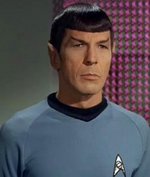
Other innovative "Star Trek" features were clever solutions to basic production problems. The idea of the faster-than-light warp drive was not a new concept in science fiction, but it provided the writers with an effective narrative device that allowed the Enterprise to quickly traverse the vast distances of deep space. The matter transporter -- which enabled crew members to be instantly 'beamed' from place to place -- neatly solved the problem of how to move the characters quickly from location to location, since the production team soon realised that filming a spacecraft landing sequence for each episode would be prohibitively expensive.
The First Pilot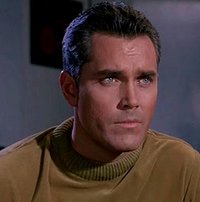
The "Star Trek" pilot was first offered to the US television network CBS, but they turned it down, opting instead for the more mainstream Irwin Allen production, "Lost In Space". "Star Trek" was then offered to NBC, who initally rejected it as being too cerebral and lacking in action. However, NBC executives were favourably impressed with the concept and they made the highly unusual decision to commission a second pilot -- "Where No Man Has Gone Before". Only the character of Spock (played by Leonard Nimoy) remained from the original pilot, and only two of its cast members (Majel Barrett and Nimoy) carried on to the series. It is also notable that the character of the ship's female First Officer was changed to a male for the second pilot. Although the first pilot was never broadcast in its original form until many years later, much of the footage was cleverly recycled in a later episode.
The Second Pilot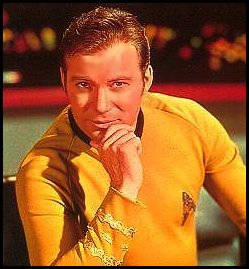
It was in the second pilot that almost all of the main characters (and the actors who played them) came into the series -- Captain Kirk (William Shatner), chief engineer Lt Cmdr Scott (James Doohan) and Ensign Sulu (George Takei), who was ship's botanist in this episode and helmsman later in the series. Still missing at this point was chief medical officer Dr. Leonard McCoy (DeForest Kelley) (a Dr. Piper was present on the ship instead) and communications officer Lt Uhura (Nichelle Nichols). Roddenberry's inclusion of the Sulu (and later Uhura) characters was a bold move, given the conservative nature of American TV at the time (and the deep-rooted racism in much of American society). There is no doubt that Takei and Nichols were the first actors from their respective ethnic backgrounds (Nichols is African-American, Takei is Japanese-American) to have regular featured roles that did not depict their characters as inferior racial stereotypes. Nichols' character is also notable as one of the very first roles in American TV in which a woman held a senior position and worked as an equal with male collegeaues. Indeed, according to Nichols her presence in the series was considered such an important advance for the profile of African-Americans that when she told Dr Martin Luther King, Jr that she was considering leaving the series, he personally pleaded with her to remain in the cast. Many aspects of starship life in the series were modeled after the British Royal Navy of the age of sail. Roddenberry had intended to make Christopher Pike (the captain in the original pilot episode) similar to the fictional captain Horatio Hornblower. There is a certain formality among the characters; the series writer's guide points out that sudden emergencies are not to be met with a beautiful crewman rushing into the captain's arms and awaiting certain doom. The Enterprise is one vessel of thousands in Starfleet, which is governed by the United Federation of Planets, consisting of more than a hundred fifty member planets.
Many aspects of starship life in the series were modeled after the British Royal Navy of the age of sail. Roddenberry had intended to make Christopher Pike (the captain in the original pilot episode) similar to the fictional captain Horatio Hornblower. There is a certain formality among the characters; the series writer's guide points out that sudden emergencies are not to be met with a beautiful crewman rushing into the captain's arms and awaiting certain doom. The Enterprise is one vessel of thousands in Starfleet, which is governed by the United Federation of Planets, consisting of more than a hundred fifty member planets.
|




